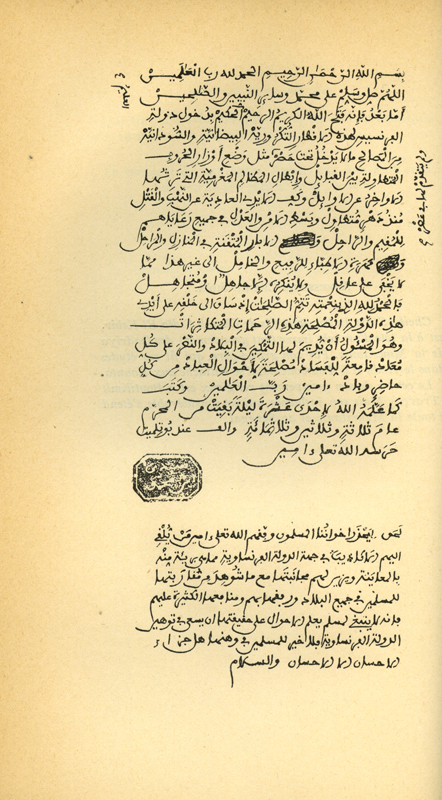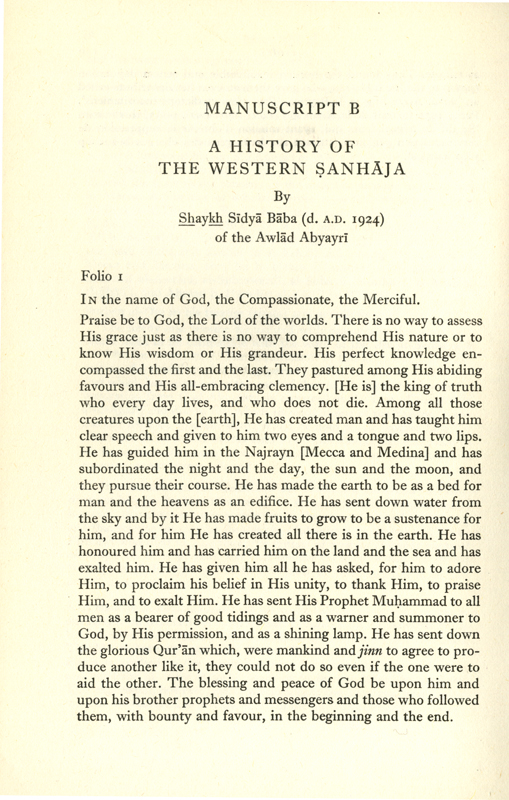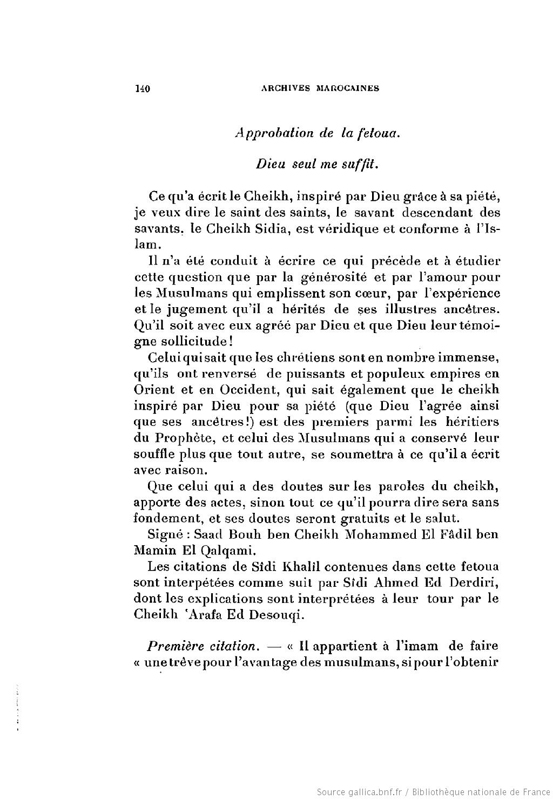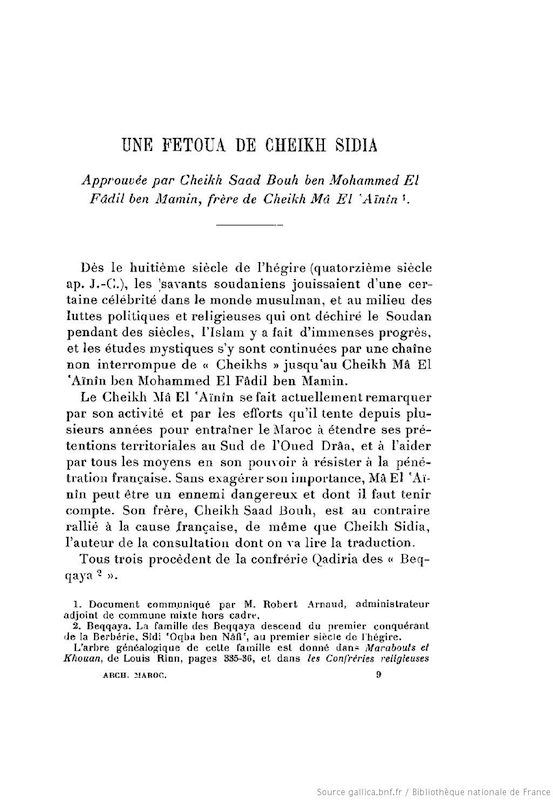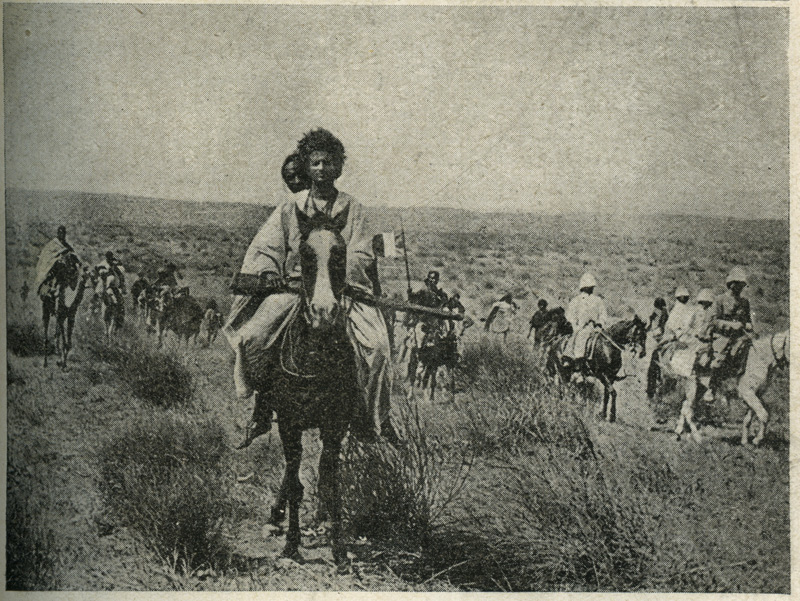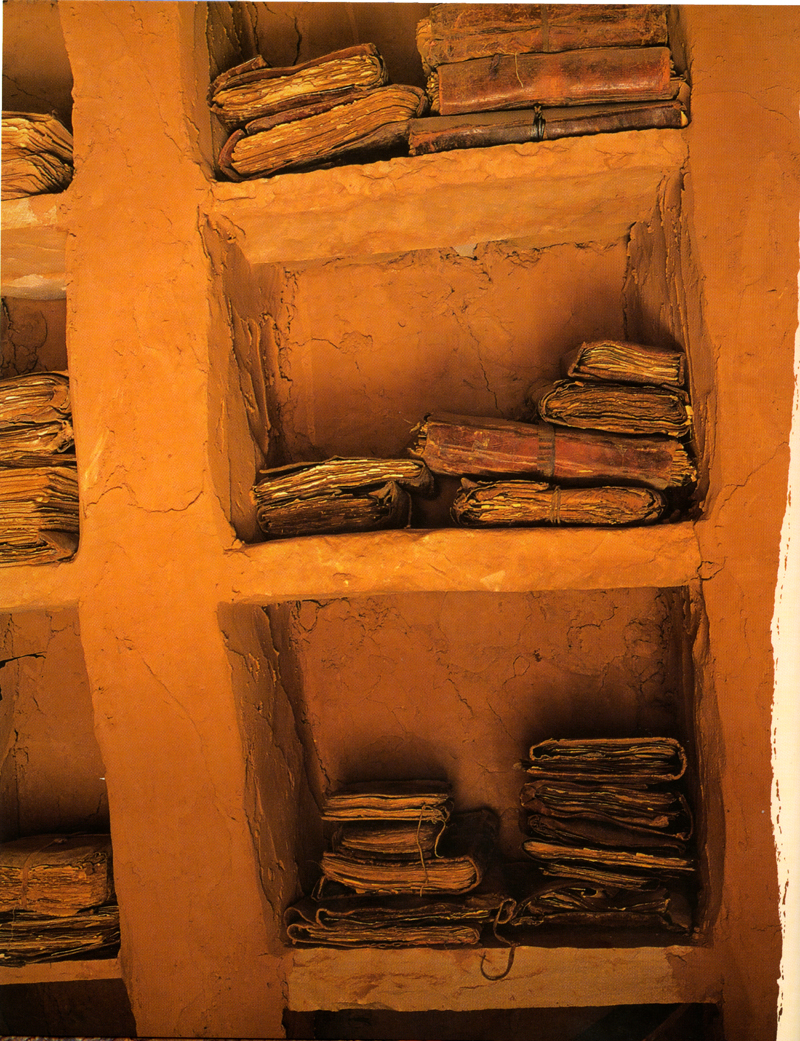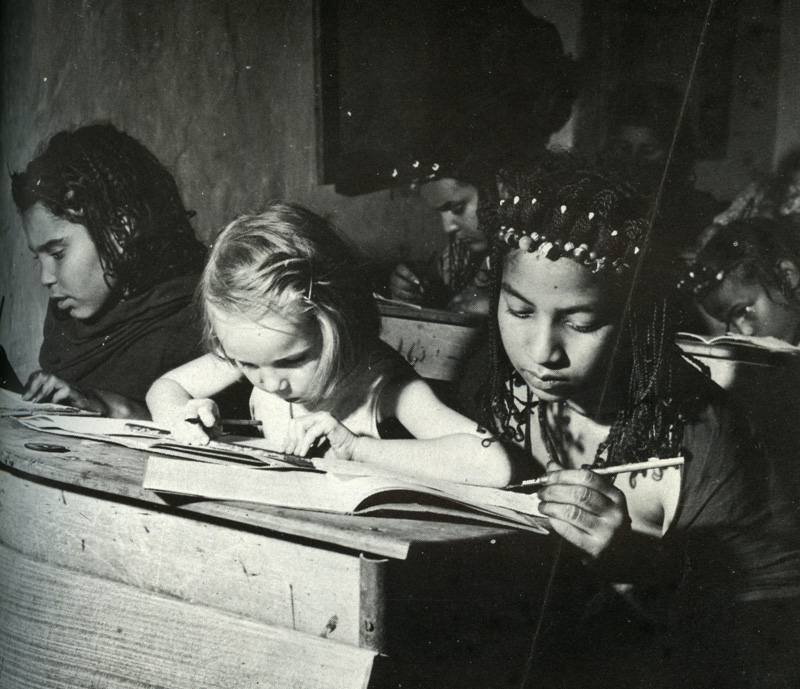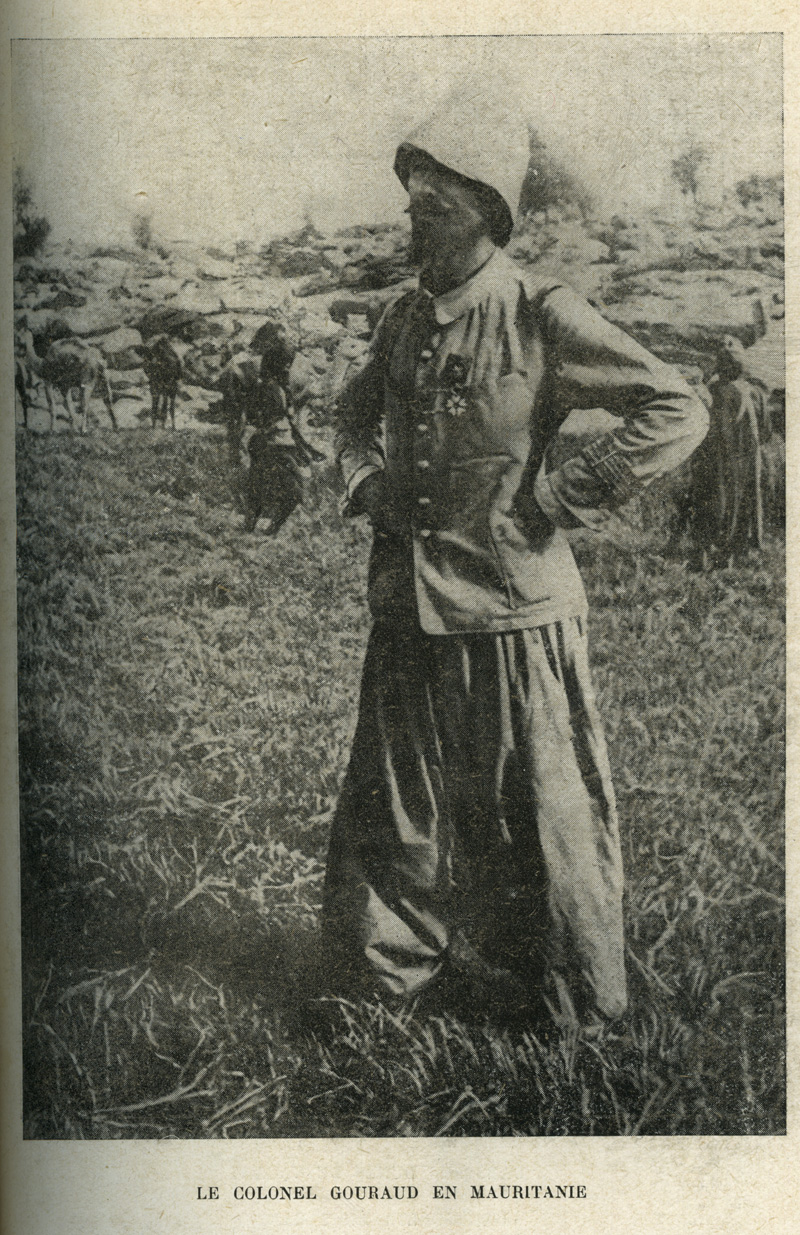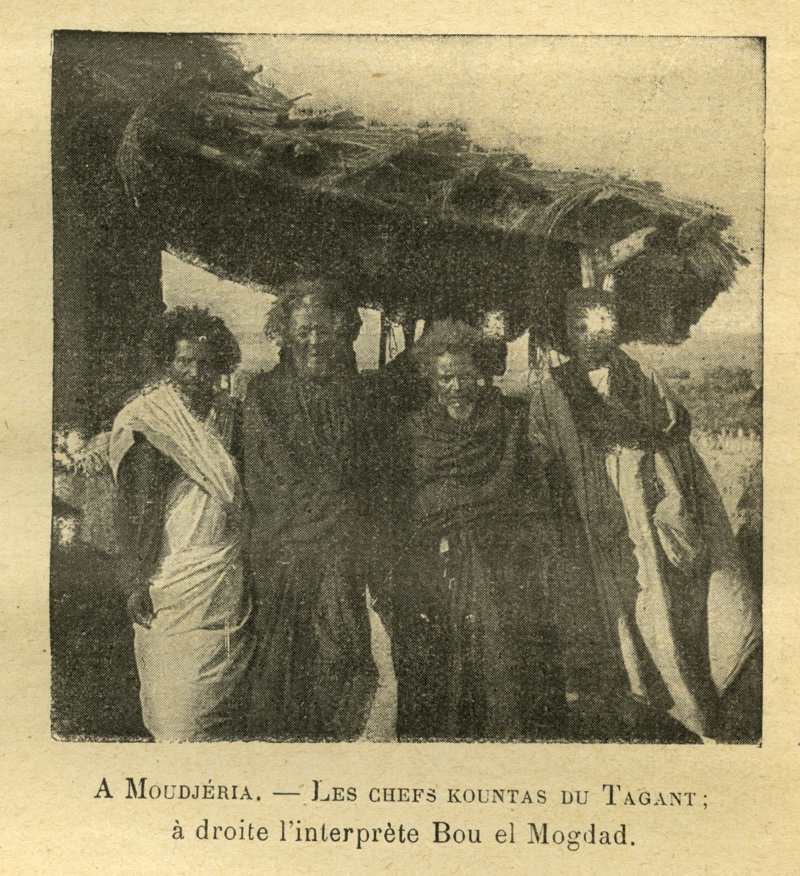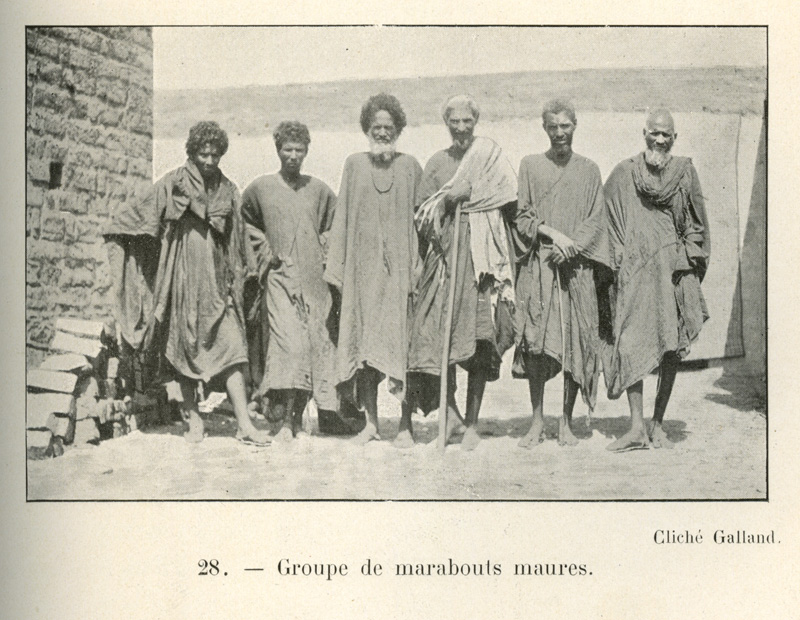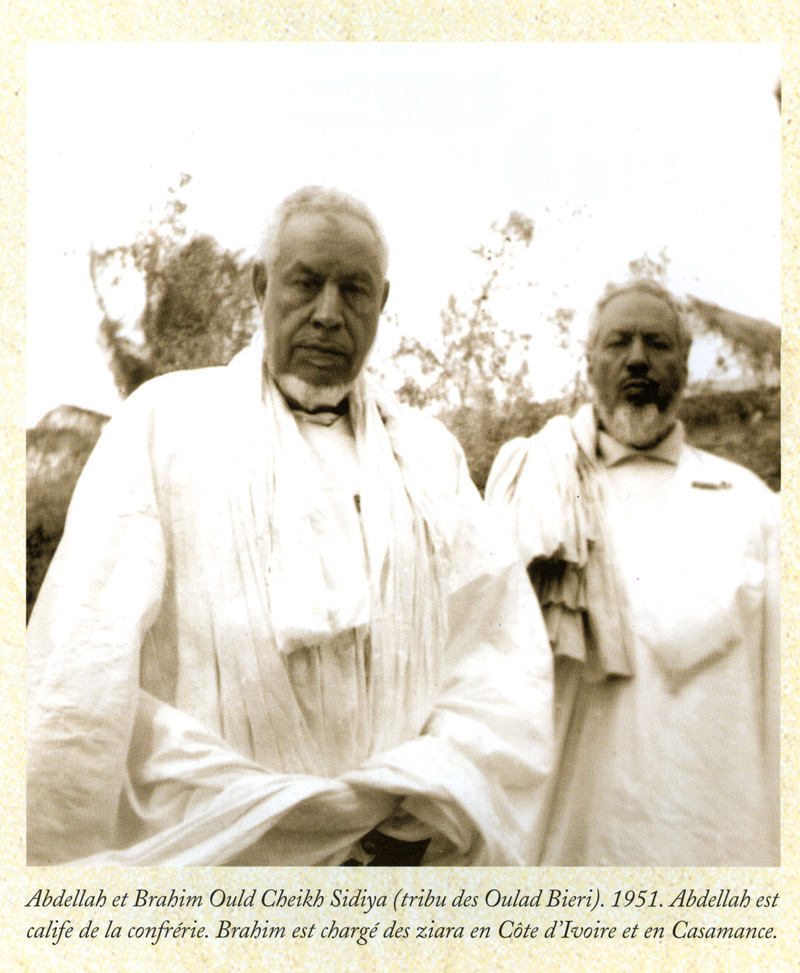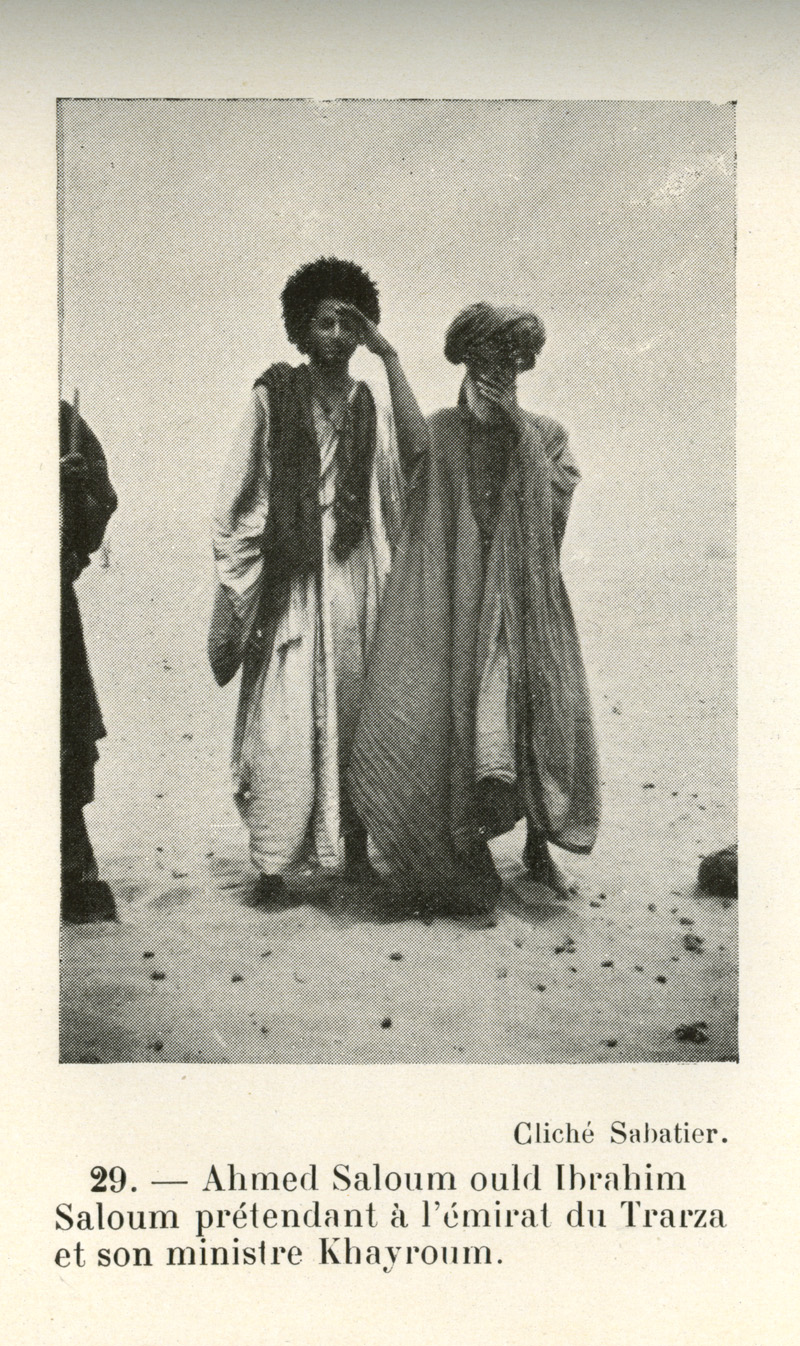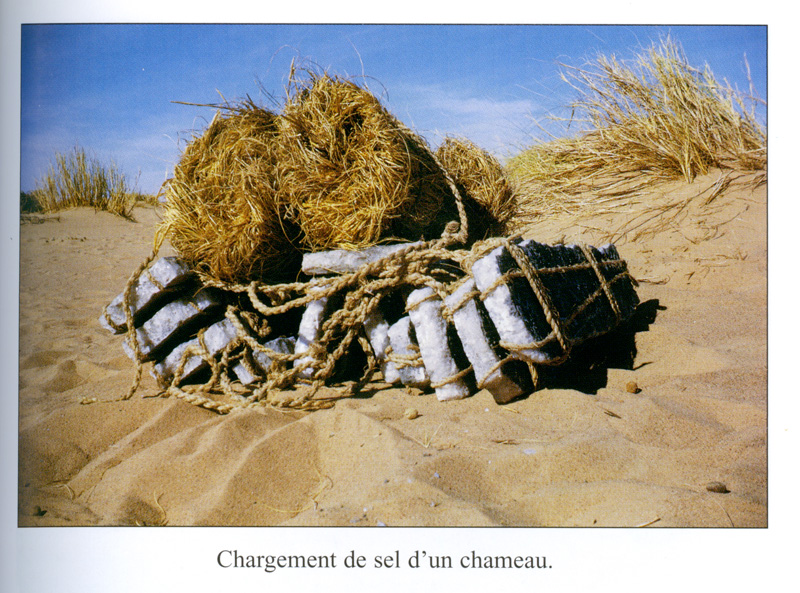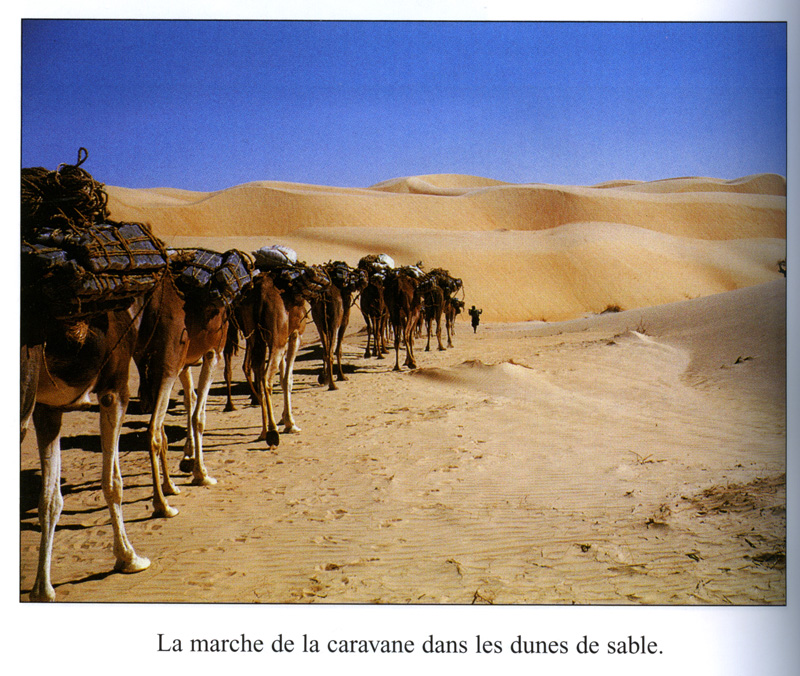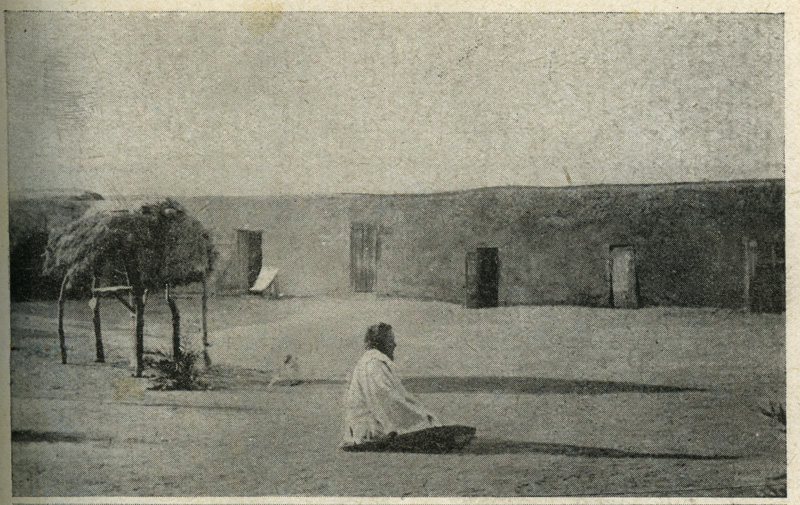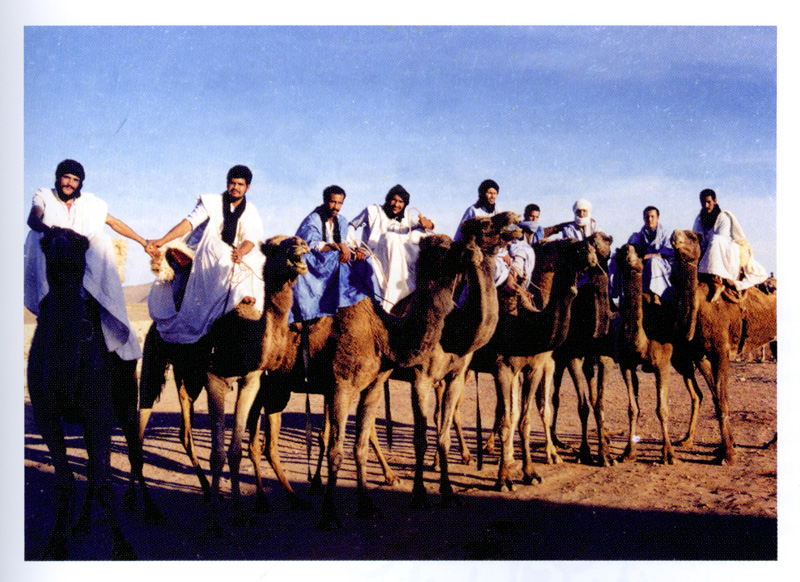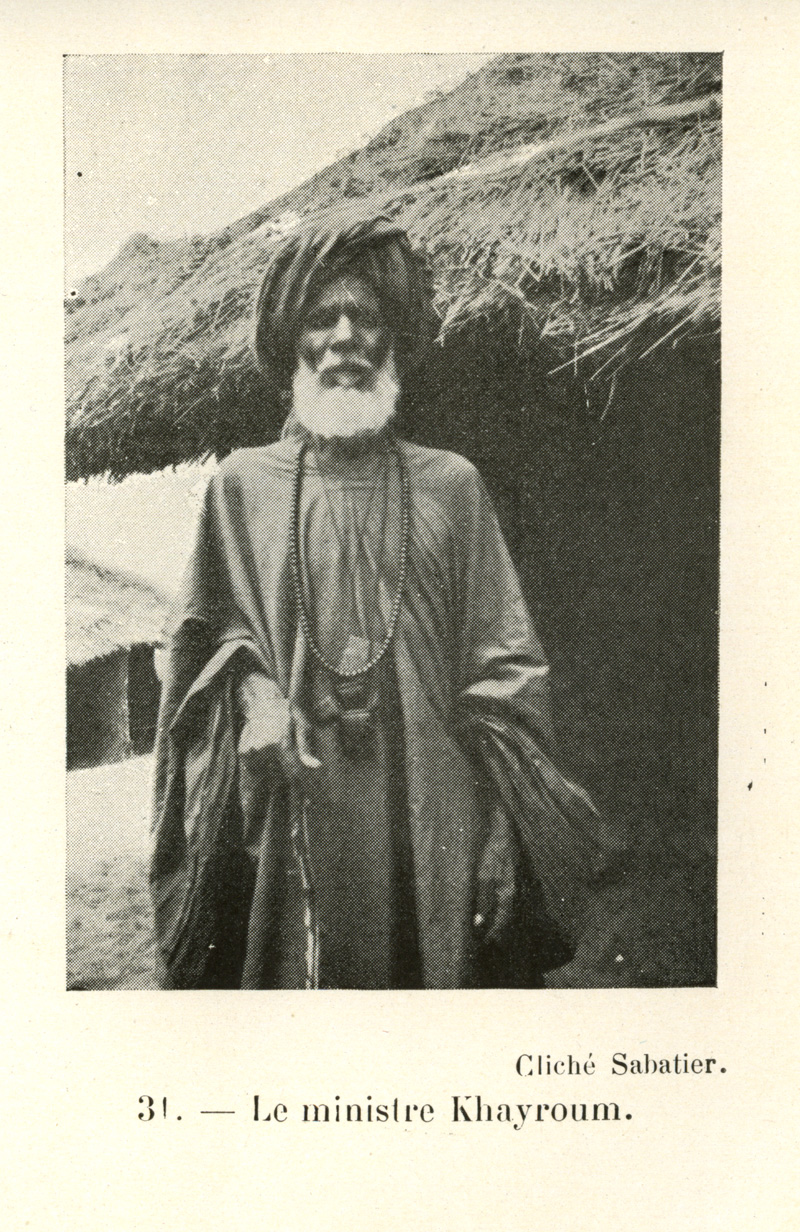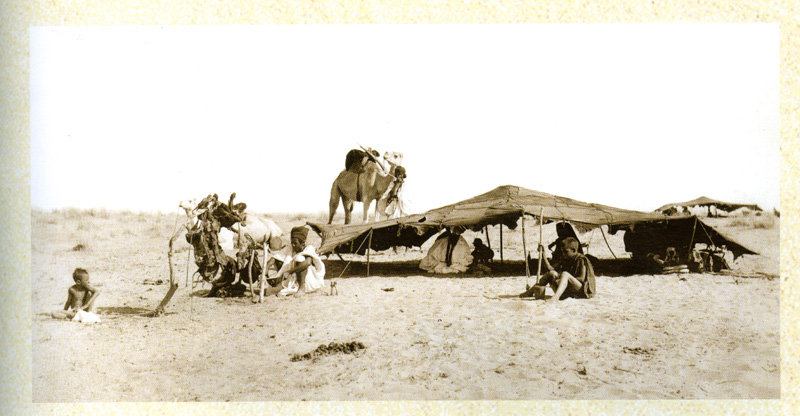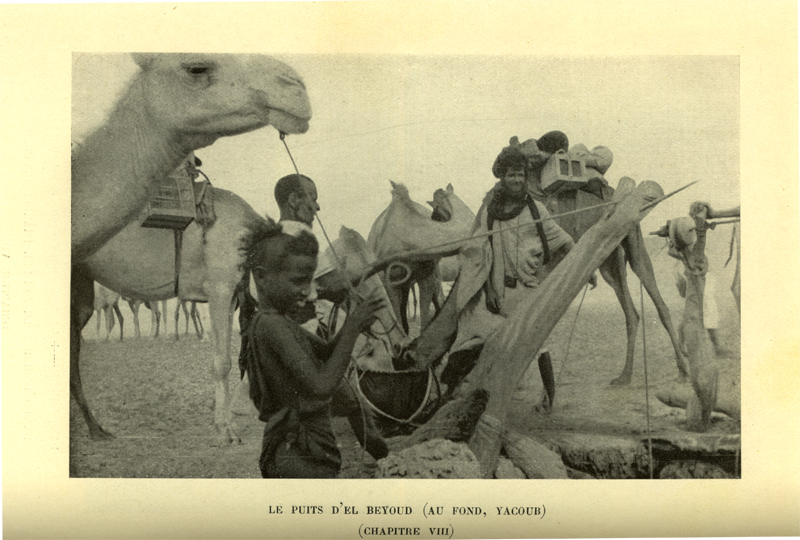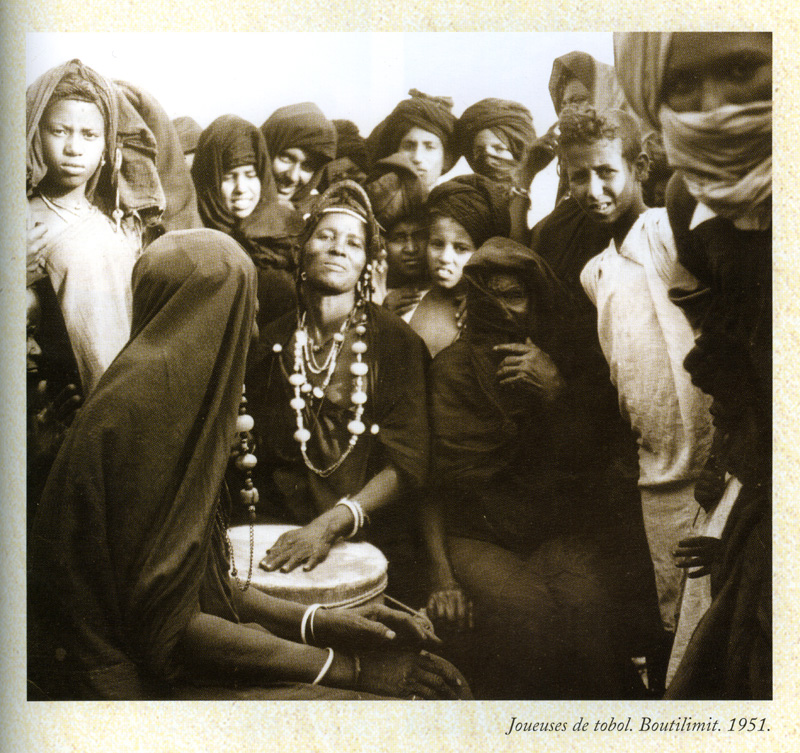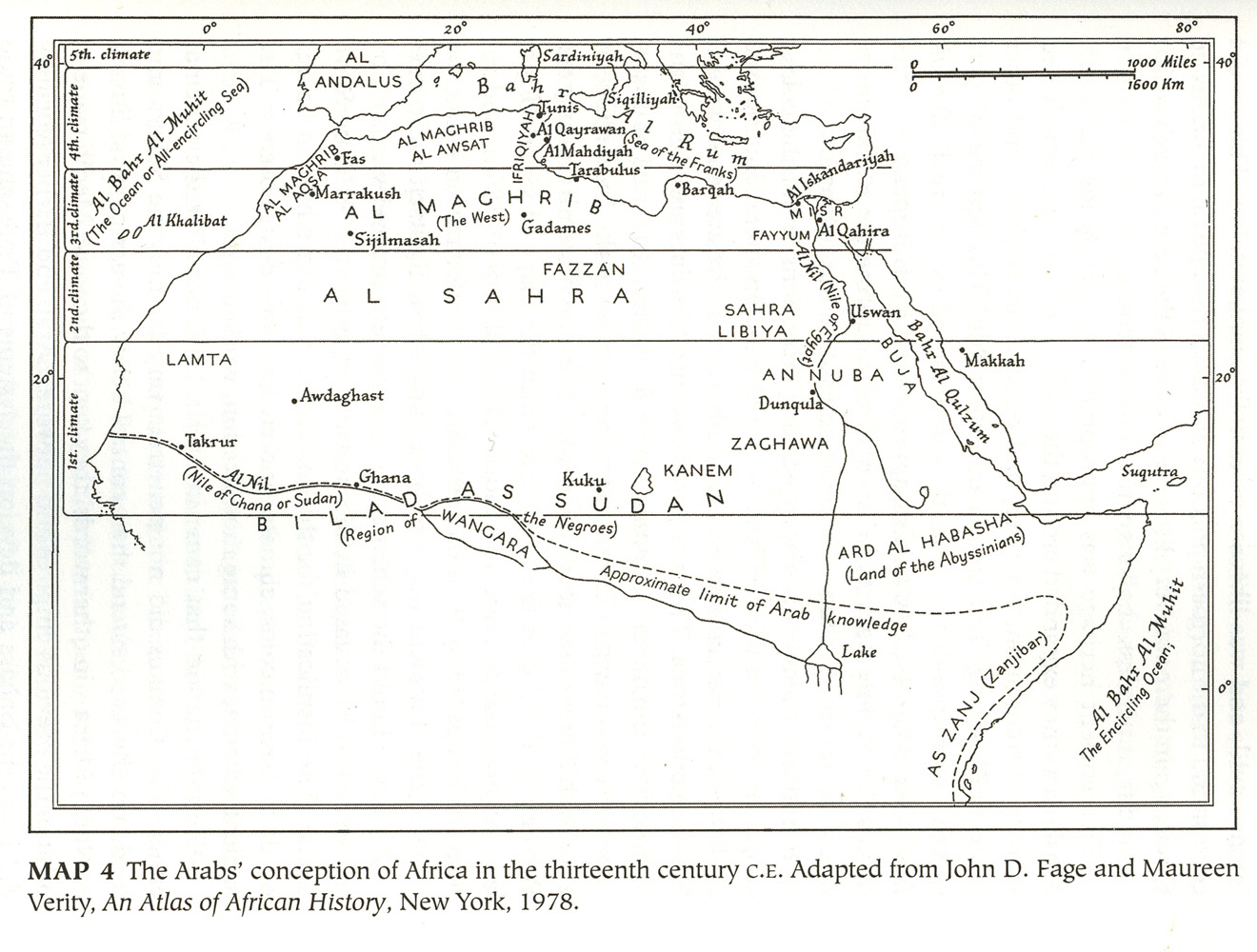Collaboration, Modernity and Colonial Rule: Sidiyya Baba and Mauritania
By David Robinson
- Browse:
- Documents
- Photographs
- Maps
- View All
Documents
1914 Declaration of Support for French in WWI
Date: December 8, 1914Format: Text/txt
In 1914, as the Allies faced off against the Axis powers, including the Ottomans and their sultan, who had recently begun using the more resonant Islamic title of caliph, the French grew concerned that the Ottoman sultan's call for all Muslims in the world to wage jihad against the Allies might produce revolt among some of their subjects in West Africa. They consequently called upon their leading clerical allies to issue declarations of support for the French cause, and to indicate that there was no obligation incumbent upon Muslims to support the Ottoman cause. They gathered these statements together in a special issue of their leading journal on the Islamic world, the "Revue du Monde Musulman," and published it at the end of the year. Sidiyya Baba's declaration was among the most important in that volume. He took up some of the themes that he had articulated in his 1903 declaration. We have no way to measure the impact of Baba's statement or the others in that volume. We can say that the sultan's call to jihad received little response among the Muslim societies of French West Africa.
A History of the Western Sanhaja: Longer Excerpts
Date Range: 1910-1919Format: Text/jpeg
This history was written by Sidiyya Baba with French encouragement, probably in the early 1910s. The Captain Gerard who is mentioned was a French officer stationed at Butilimit, and he urged Baba to write this history. Baba had a significant impact on the formation of knowledge about Mauritania, an impact which still holds today. An English translation fills pages 160-217 of H.T. Norris, "Saharan Myth and Saga" (Oxford: the Clarendon Press, 1972). Norris was an important anthropologist and literary historian of Mauritania and the "bidan." This longer excerpt comes from the beginning and the end of the history, pages 160-163 and 211-213 of the Norris book. The shorter excerpt found in the essay is from page 211.
Approbation de la fetoua. Dieu seul me suffit
Date: 1903Format: Text/jpeg
Endorsement of Sidiyya Baba by Saad Buh. In the same article published in “Archives Marocaines” in 1907, the French printed an endorsement by Saad Buh of the content of Sidiyya Baba’s fatwa. Saad Buh, from his headquarters in Trarza, had been an ally of the French for much longer than Baba, and in addition he was a younger half-brother of the principal French opponent for the conquest of Mauritania, Ma-El-Ainin. For these reasons his endorsement of the declaration and his support of Coppolani’s “pacification” were important. The endorsement was probably written and read early in 1903, as the Coppolani campaign was beginning.
Fatwa of Shaikh Sidiyya Baba
Date: January 5, 1903Format: Text/jpeg
This very important document was issued by Sidiyya Baba in January, 1903, just as he and Saad Buh were touring the Senegal River region with the French, who were launching their "pacification" campaign to take over southern Mauritania. It provided important justification for Muslims accepting French overrule. Here we provide excerpts of the document, translated from the French version into English. The French translation of the Arabic was published in 1907 by Edouard Michaux-Bellaire, ed. and trans., in "Une fetoua de Cheikh Sidia approuvee par Cheikh Saad Bouh ben Mohamed El Fadial ben Mamin, frere de Cheikh Ma El Ainin," Archives Marocaines 11 (1907), pp. 129-39.
Hassana Letter
Date: September 15, 1905Format: Text/pdf
English translation from the French translation of the Arabic of the 1905 letter of Hassana, son of Ma-El-Ainin, to Shaikh Sidiyya Baba. This excerpt comes from a document which we can call a fatwa. It was a slightly veiled threat against Sidiyya Baba, written by someone in the Ma El Ainin party in the hopes of separating Baba from his alliance with the French. It was written in 1905, between the “pacification” of southern Mauritania, ended by the assassination of Coppolani, and the resumption of the conquest in 1909 under the leadership of Gouraud.
Memoires de Bou El Mogdad
Date: 1903Format: Text/pdf
This report, written up by Bu El Moghdad II after the watershed visit of Sidiyya Baba to the French colonial capital of Saint-Louis in 1898, was compiled for the French and deposited in the Mauritanian archives in Nouakchott. My copy was given to me by Charles Stewart in 1969, and probably does not exist in the Mauritanian archives at the present time. I suspect that Bu El Moghdad drafted the report in Arabic, since his French was more limited than the language that he began learning in his childhood.
Photographs
Armed Moorish Party
Date Range: 1900-1909Format: Image-StillImage/jpeg
This is a typical armed Moorish party out for raiding or defending itself from other parties. Gouraud included it in his book of recollections of his Mauritanian campaign.
Books
Date: 2000Format: Image-StillImage/jpeg
This is a photo of a typical library of a marabout or cleric, with manuscripts and published books placed in the squares of the masonry. Shaikh Sidiyya al-Kabir and Shaikh Sidiyya Baba had vast libraries and systems for placing and finding the different kinds of material.
Girls' School
Date Range: 1970-1979Format: Image-StillImage/jpeg
A picture of a girls' school in Mauritania in the late 20th century, not unlike the one which the French and Sidiyya Baba created in the early 20th century.
Gouraud, the leader of the French conquest of central Mauritania
Date Range: 1900-1909Format: Image-StillImage/jpeg
An image of Colonel Henri Gouraud during his conquest of central Mauritania during 1908-10. He went on to become a general and was very influential with the military and colonial circles in France. This photo contains the caption, "Le Colonel Gouraud en Mauritanie"
Group of marabouts photographed, with Dudu Seck or Bu El Mogdad II at far right
Date Range: 1910-1919Format: Image-StillImage/jpeg
Gouraud took this picture of a group of Mooorish clerics or zwaya. Dudu Seck, or Bu El Mogdad II, is the figure on the far right, and is serving as interpreter and emissary for the French. This comes from a different work by Gouraud, the leader of the French conquest of central Mauritania. This photo contains the caption, "A Moudjéria - Les chefs kountas du Tagant; à droite l'interprète el Mogdad."
Marabouts Maures
Date Range: 1900-1909Format: Image-StillImage/jpeg
Two French travelers took this photo of Mauritanian clerics in the early 20th century. They were part of the zwaya division of bidan society. This photo contains the caption, "Cliché Galland. 28. - Groupe de marabouts maures."
Picture of Sidiyya Baba's Sons, 1951
Date: 1951Format: Image-StillImage/jpeg
This is another photo from Du Puigadeau and portrays the sons of Sidiyya Baba in 1951. They were quite influential within colonial Mauritania and Senegal, and often made collection tours to Senegal. Abdallah, the third son, was the overall leader in the family after 1927. This photo contains the following caption, "Abdellah et Brahim Ould Cheikh Sidiya (tribu des Oulad Bieri). 1951. Abdellah est calife de la confrérie. Brahim est chargé des ziara en Cόre d'Ivoire et en Casamance."
Ruling House of Trarza
Date Range: 1900-1909Format: Image-StillImage/jpeg
These two French travelers took this photo of the emir and one other member of the ruling lineage of the Trarza confederation, which dominated southwestern Mauritania. They were from the hassan branch of bidan society. This photo contains the caption, "Cliché Sabatier. 29. - Ahmed Saloum ould Ibrahim Saloum prétandant à l'émirat du Trarza et son ministre Khayroum."
Salt Blocks
Date Range: 2000-2009Format: Image-StillImage/jpeg
This recent photo from Mauritania, also from Daniel, shows the salt slabs or blocks which the camels carried in their caravans which originated in mines, usually in the northern Sahara, and traveled south to the Sahelian region of West Africa to supply much needed salt. This photo contains the caption, "Chargement de sel d'un chameau."
Salt Caravan
Date Range: 2000-2009Format: Image-StillImage/jpeg
A recent color photo of a salt caravan transiting Mauritania. These caravans were even more important before the 20th century and French colonial rule. They originated in salt mines which were usually located in the northern part of the Sahara. The caravans supplied the Sahel and other parts of West Africa with the essential ingredient of salt, which was lacking in most of the region. This photo contains the caption, "La marche de la caravane dans les dunes de sable."
Sidiyya Baba in Prayer
Date Range: 1900-1909Format: Image-StillImage/jpeg
The French officer Henri Gouraud spent a great deal of time in Butilimit, Sidiyya Baba's capital, in 1908-10, when he was leading the French conquest of central Mauritania or Adrar. He or someone on his staff took this picture of Baba at prayer in his courtyard.
Takna Soldiers
Date Range: Early 20th CenturyFormat: Image-StillImage/jpeg
A recent picture of the Tekna. In the early 20th century they were a well-armed, mobile group of raiders and traders rooted in the north, in what the Spanish called Rio de Oro and would today be called the Western Sahara. They ranged far to the south, along with the Awlad Bu Sba`, and put the Sidiyya on the defensive.
Trarza Minister Khayroum
Date Range: 1900-1909Format: Image-StillImage/jpeg
Two French travelers took this picture of the minister or manager of Trarza affairs, Khayrum. He knew several languages, handled negotiations, traveled widely, and survived many struggles for power in the Trarza confederation in the late 19th and early 20th century. This photo contains the following caption, "Cliché Sabatier. 31. - Le ministre Khayroum."
Typical Tent
Date Range: 1930-1939Format: Image-StillImage/jpeg
Odette du Puigadeau traveled to Mauritania several times in the 1930s and published her accounts and pictures upon her return. Marion Senones accompanied her on this trip. This is a photo of their tent, and it is typical of the texts that Moors used for living, traveling and trading across Mauritania.
Wells
Date: 1937Format: Image-StillImage/jpeg
This photo shows the importance of wells for both the camels and the human beings living and traveling in the desert. Travelers had to know the location of the wells and who controlled access to them. This photo contains the caption "Le Puits d'El Beyoud (Au Fond, Yacoub) Chapitre VIII."
Women Musicians, Butilimit
Date: 1951Format: Image-StillImage/jpeg
A photo of some of the social life of the Moors in the mid-20th century. This photo contains the caption, "Joueuses de tobol. Boutilimit. 1951."
Maps
The Arabs' conception of Africa in the thirteenth century C.E.
Date Range: 1970-1979Format: Image-StillImage/jpeg
This mental map, based on Arab conceptions of the Mediterranean and Africa, correlates the descending southern climes of Africa with greater heat and diminished civilization. It created the framework for racial and cultural prejudice, and was very present in the 19th and 20th century conceptions of "white" or bidan societies as they thought of the "blacks" or sudan living in Senegal and other areas to the south. This map contains the following captions, "Map 4 - The Arabs' conception of Africa in the thirteenth century C.E. Adapted from John D. Fage and Maureen Verity, An Atlas of African History, New York, 1978." "5th climate" "Al Bahr Al Muhit (The Ocean or All-Encircling Sea)" "Al Maghrib" "Al Aosa" "Ifriqiyah" "Sardiniyah" "Al Andalus" "Bahr Al Rum (Sea of the Franks)" "Fas" "Al Maghrib" "Al Aswat" "Tunis" "AL Qayrawan" "Al Mahdiyah" "Siqilliyah" "4th climate" "Al Khalibat" "Marrakush" "Al Maghrib (The West)" "Sijilmasah" "Gadames" "Barqah" "Al Iskandariyah" "Misr" "Fayyum" "Al Qahira" "3rd climate" "Al Sahra" "Fazzan" "Sahra" "Libiya" "Al Nil (Nile of Egypt)" "Uswan" "2nd climate" "Lamta" "Awdaghast" "Takrur" "Al Nil (Nile of Ghana or Sudan)" "Ghana" "Bilad As Sudan (Region of the Negroes)" "Kuku" "Kanem" "Buja" "An Nuba" "Dunqula" "Zaghawa" "Bahr Al Qulzum" "Makkah" "Suqutra" "1st climate" "Wangara" "Ard Al Habasha (Land of the Abyssinians)" "Approximate limit of Arab knowledge" "Lake" "As Zanj (Zanjibar)" "Al Bahr Al Muhit (The Encircling Ocean)"
